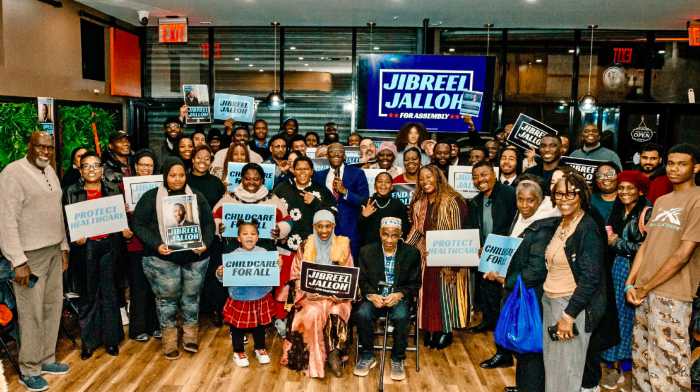Really?
BY ARTHUR S. LEONARD | One of the nation’s most senior federal trial judges, 92-year-old Warren W. Eginton of Connecticut, rejected an employer’s motion to dismiss a sex discrimination claim brought by an openly gay employee under Title VII of the 1964 Civil Rights Act. In a November 17 ruling, Eginton, appointed by Jimmy Carter in 1979, accepted the argument that Title VII can be interpreted to ban sexual orientation discrimination, despite prior contrary rulings by the Second Circuit Court of Appeals, under whose jurisdiction his court is.
Eginton’s ruling came less than two weeks after a federal district judge in Pennsylvania, Cathy Bissoon, appointed by President Barack Obama, issued a similar ruling in EEOC v. Scott Medical Health Center, bucking contrary appellate precedent in the Third Circuit. Could this be the beginning of a trend?
Lisa Boutillier, a lesbian who formerly taught in the Hartford public school system, claimed she suffered discrimination and retaliation because of her sexual orientation and physical disability in violation of the Connecticut Fair Employment Practices Act, the Americans with Disabilities Act (ADA), and Title VII. Because Connecticut law explicitly bans sexual orientation and disability discrimination, she could have brought her case in state court and, by confining her claims to state law, avoided ending up in federal court where the adverse circuit precedent exists. Instead, however, her attorney, Margaret M. Doherty, included the federal claims and filed in the US District Court, prompting the school district to file a motion arguing that Title VII does not cover this case.
Connecticut case is latest in district court challenges to existing circuit precedents
Eginton concluded that Boutillier failed to allege facts sufficient to qualify as a person with a disability under the ADA, so her ability to maintain her action in federal court turned entirely on whether she could allege a sex discrimination claim under Title VII.
Eginton devoted most of his opinion to the Title VII question, sharply disputing the Second Circuit’s prior rulings refusing to allow sexual orientation discrimination claims under Title VII. The Second Circuit erred, Eginton charged, because it “failed to take the ordinary meaning of the [Civil Rights] Act’s text to its logical conclusions.” Instead, it relied on the view that Congress in 1964 had no intention of protecting gay people from discrimination. However, the judge wrote, “Straightforward statutory interpretation and logic dictate that sexual orientation cannot be extricated from sex: the two are necessarily intertwined.” Eginton pointed out the inconsistency between the Second Circuit’s approach to sexual orientation and its cases about race discrimination, with the circuit accepting the argument that it is race discrimination when an employer discriminates against an employee for engaging in an interracial relationship. The Second Circuit’s cases are “not legitimately distinguishable,” he argued. “If Title VII protects individuals who are discriminated against on the basis of race because of interracial association (it does), it should similarly protect individuals who are discriminated against on the basis of sex because of sexual orientation –– which could otherwise be named ‘intrasexual association.’”
Eginton pointed out that the Supreme Court’s 1989 decision in Price Waterhouse v. Hopkins, which held that the firm was guilty of sex discrimination in denying a woman partnership because she was seen as insufficiently feminine, “bolsters” his conclusion in holding that “sex stereotyping could constitute discrimination because of sex… Indeed, stereotypes concerning sexual orientation are probably the most prominent of all sex related stereotypes, which can lead to discrimination based on what the Second Circuit refers to interchangeably as gender non-conformity.”
The judge added, “Homosexuality is the ultimate gender non-conformity.”
Eginton quoted extensively from a recent Seventh Circuit decision, Hively v. Ivy Tech Community College, where a three-judge panel dismissed a sexual orientation discrimination claim because of circuit precedent, but two members of the panel submitted an opinion suggesting that the circuit should reconsider its position. The Seventh Circuit later voted to grant “en banc” review by all its judges, with arguments heard on November 30.
Eginton pointed out the paradox stemming from the Second Circuit’s distinction between sex stereotyping and sexual orientation discrimination, writing, “Essentially, employers are prohibited from discriminating against employees for exhibiting stereotypical gay behavior, yet, at the same time, employers are free to discriminate against employees for actually being gay.”
Eginton noted that the Equal Employment Opportunity Commission adopted this view in 2015 and that a Second Circuit panel will soon rule on appeals from trial court dismissals of sexual orientation claims in several cases from New York, which he acknowledged might well decide the question on which he is currently challenging the circuit’s precedent.




































